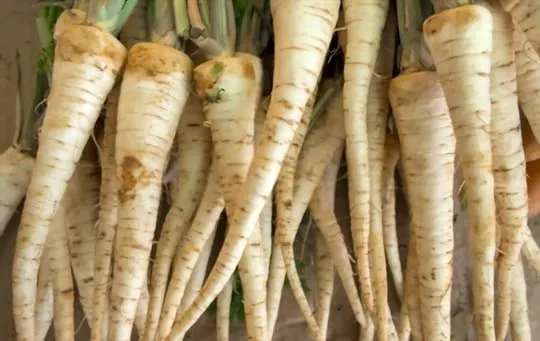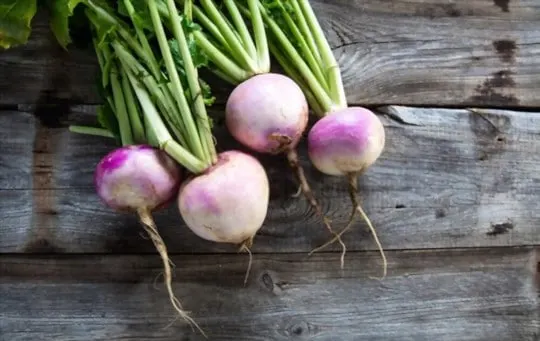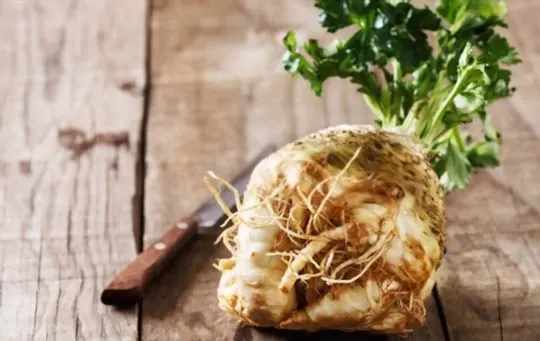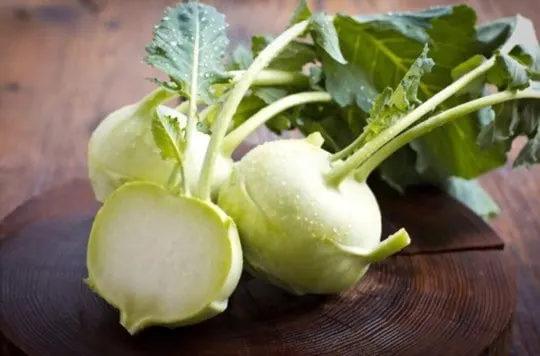Ever been halfway through cooking your favorite stew or roast, only to realize you’re fresh out of parsnips? We’ve all been there. And while it might seem like a disaster, it really isn’t.
There are plenty of alternatives that can fill in without missing a beat. We’re talking about substitutes that bring their own unique flavors and textures to the table.
You might even discover a new favorite. That’s the beauty of cooking – it’s all about experimenting and finding what excites your taste buds.
Join us, as we unveil our top picks for swapping out parsnips. You won’t be disappointed.
The 5 Best Substitutes For Parsnips
Parsnips are root vegetables known for their sweet and earthy flavor.
They are commonly used in various culinary preparations, but if you’re looking for substitutes or alternatives to parsnips, there are several options available.
| Substitute | Key Characteristics | Proper Ratio |
|---|---|---|
| White Carrots | Mild and slightly sweet flavor | Use an equal amount of white carrots as a substitute for parsnips |
| Orange Carrots | Sweet and slightly earthy taste | Use an equal amount of orange carrots as a substitute for parsnips |
| Turnips | Earthy and slightly peppery flavor | Use an equal amount of turnips as a substitute for parsnips |
| Celeriac | Mild and nutty flavor with a hint of celery | Use an equal amount of celeriac as a substitute for parsnips |
| Kohlrabi | Mild and crisp with a hint of sweetness | Use an equal amount of kohlrabi as a substitute for parsnips |
Now let’s dive into each substitute in more detail:
1 – White Carrots

Parsnips and white carrots look similar, and they both belong to the same family.
They also share a similar flavor and texture.
So, white carrots can substitute parsnips in any dish that calls for the latter.
White carrots are also versatile as you can use them in both sweet and savory dishes.
You can never go wrong with carrots, from carrot cakes to muffins and stir-fries to salads.
Carrot soups and glazed carrots as a side dish are also interesting.
Apart from being delicious and versatile, white carrots are also nutritious and provide several health benefits.
- Key Characteristics: White carrots have a mild and slightly sweet flavor similar to parsnips. They can be used as a straightforward substitute by using an equal amount of white carrots in place of parsnips. Their texture and taste make them suitable for recipes that call for parsnips.
2 – Orange Carrots

If you don’t mind the bright color, orange carrots can substitute for parsnips.
Orange carrots are the same as white carrots but more widespread.
So, you can use the former for any dish when the other two are unavailable.
Orange carrots are also versatile items, and so you can have them raw, roasted, fried, boiled, steamed or puréed.
They taste amazing whether added to sweet or savory dishes.
Since they are also readily available, you can create plenty of dishes at any time.
Like white carrots, orange ones also offer plenty of health benefits and improve our health.
They are rich in calcium and vitamin K, which boosts bone health.
They also have antioxidants, vitamin A, beta-carotene, vitamin C, iron and potassium.
You can use a similar quantity when replacing parsnips.
- Key Characteristics: Orange carrots offer a sweet and slightly earthy taste. While they may not have the exact flavor profile of parsnips, they can add a pleasant sweetness to dishes. Use an equal amount of orange carrots as a substitute for parsnips to introduce their natural sweetness and earthy undertones.
3 – Turnips

Like parsnips, turnips are also root vegetables, and you can use them as a replacement when the former isn’t available.
People often compare them to radishes, but you can use turnips in many dishes where the recipe asks for parsnips.
However, you have to choose young turnips, not mature ones, as they tend to become bitter over time.
The flavor can overpower a dish, and you may not have the expected outcome.
Young turnips are, however, sweet with a hint of peppery flavor when raw.
Turnips are popularly eaten raw in salads, and you can add them to soups, stews and make purées.
Besides, you can stir-fry them alone or with other veggies or cook them with meat.
They also remain fresh for weeks in the refrigerator, so you don’t have to rush to the market every time to buy some.
- Key Characteristics: Turnips have an earthy and slightly peppery flavor. Although the taste is different from parsnips, they can still provide a similar depth of flavor in recipes. Use an equal amount of turnips as a substitute for parsnips to add their unique taste and adjust cooking time as needed.
4 – Celeriac (celery root)

Also, a root vegetable, celeriac or celery root is another item that can replace parsnips in various dishes.
It’s sweeter than celery stems and has a mild flavor and a versatile ingredient.
It goes by many names like knob celery, turnip-rooted celery or celery root.
However, it comes from a completely different plant than the popular celery stalks that we often use though they belong to the same family.
It has a roundish shape like a turnip bulb but with a knobby surface and small rootlets.
Fresh celeriac has a crunchy texture with a cream-white hue.
You can eat it both raw and cooked, so it works great in salads too.
Its taste gets sweeter when cooked, so you can bake, roast, boil, or fry according to a recipe’s demands.
- Key Characteristics: Celeriac, also known as celery root, has a mild and nutty flavor with a hint of celery. While it may not have the same sweetness as parsnips, it can offer a pleasant earthiness to dishes. Use an equal amount of celeriac as a substitute for parsnips to introduce its nutty flavor and adjust cooking time accordingly.
5 – Kohlrabi

Also known as German turnip or cabbage turnip, kohlrabi can also stand in for parsnips.
It isn’t as popular as many other veggies, but its flavor is similar to parsnips.
It’s a cruciferous vegetable like broccoli and cabbage and is green on the outside but cream or pale yellow on the inside.
You can eat kohlrabi in different ways, including raw.
So, you can add it to salads, stews and soups.
You can also make stir-fries and cook with other veggies.
You may also roast, bake, boil or steam it as needed.
It tastes a little sweet but with a hint of spiciness.
Kohlrabi’s taste also tends to become more intense as it grows older.
So, make sure to get younger ones with their leaves on top if possible.
It contains a fibrous layer beneath the skin, and it doesn’t soften even when cooked.
So you should peel off both the skin and that layer till you arrive at the juicy flesh.
- Key Characteristics: Kohlrabi has a mild and crisp texture with a hint of sweetness. Although it may not replicate the exact taste of parsnips, it can provide a refreshing and slightly sweet element to recipes. Use an equal amount of kohlrabi as a substitute for parsnips to enjoy its mild flavor and crunchy texture.

Leave a comment